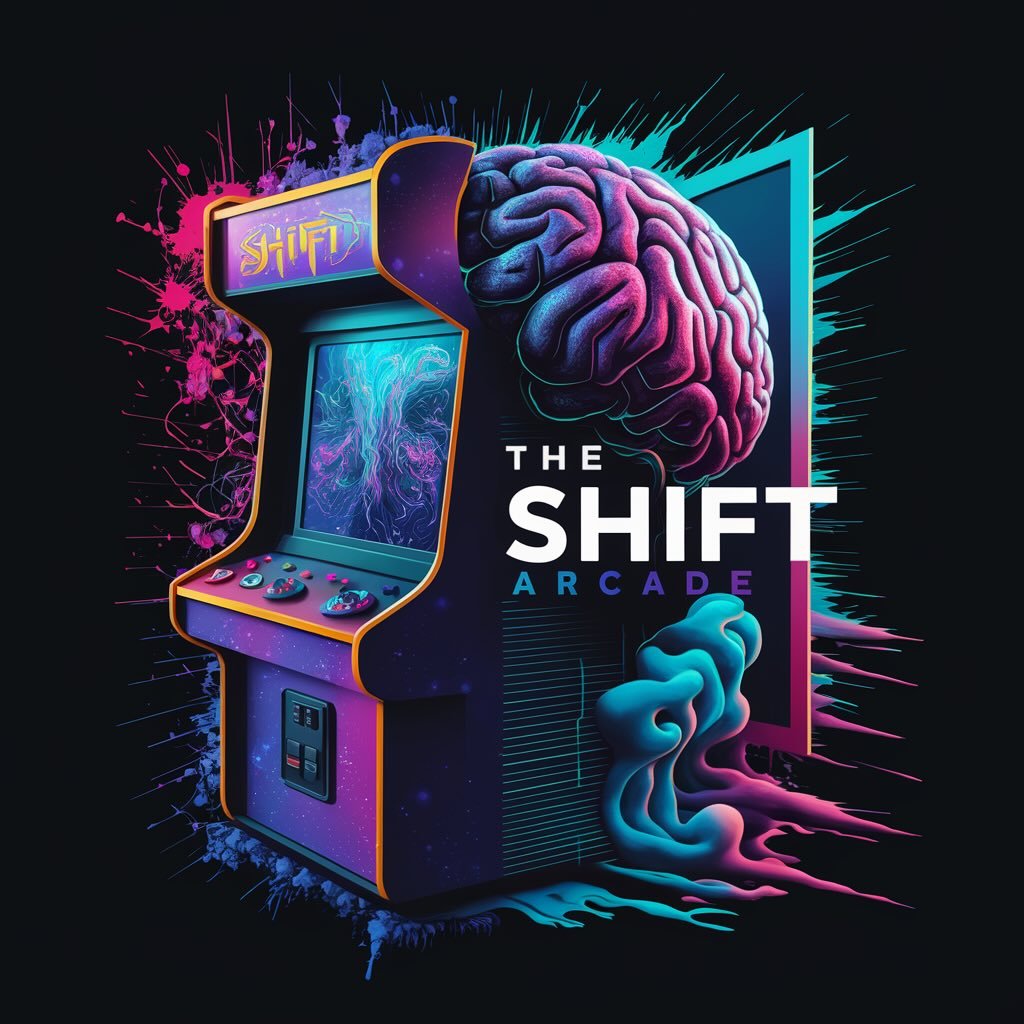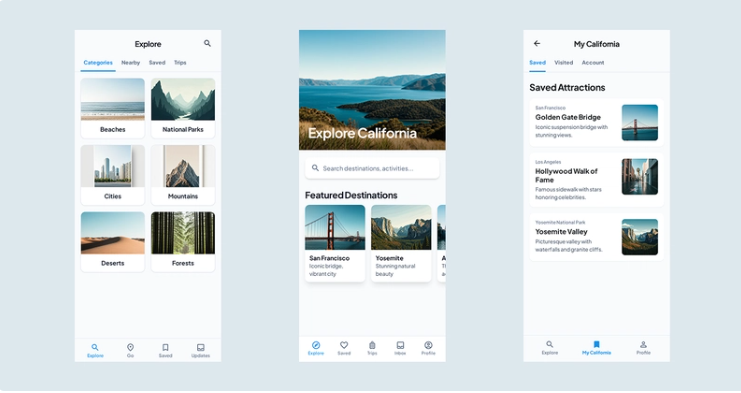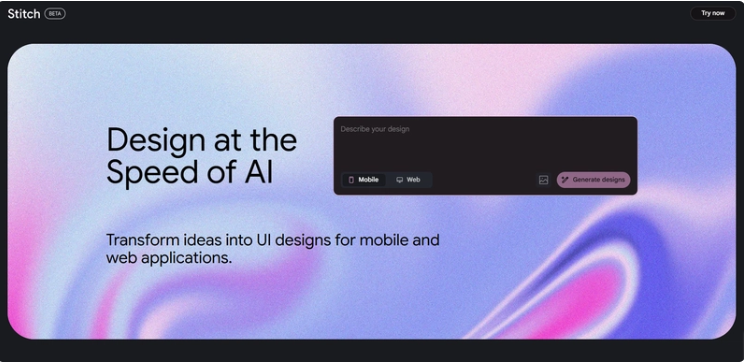Google Stitch AI Review: The Complete Guide to Google's Revolutionary Free UI Design Tool
Complete guide to Google's revolutionary Stitch AI design tool. Free UI design features, capabilities & how to use it for your projects.


Artificial intelligence is transforming how we create user interfaces, and Google Stitch AI is leading the charge by turning simple text descriptions into professional UI designs with exportable code—all completely free.
he traditional UI design process has long been a bottleneck in product development. Designers spend hours crafting wireframes, developers struggle to translate designs into code, and non-technical founders face significant barriers to bringing their ideas to life. Enter Google Stitch AI, a groundbreaking tool that promises to revolutionize this entire workflow.
Launched at Google I/O 2025 as part of Stitch Google Labs, this AI-powered platform represents Google's bold vision for democratizing UI design. But does it live up to the hype? In this comprehensive Stitch AI review, we'll explore everything you need to know about this innovative tool.
What is Google Stitch AI and How Does It Work?
Google Stitch is an experimental AI-powered UI design tool that transforms natural language prompts and images into complete user interface designs with exportable front-end code. Built on Google's advanced Gemini 2.5 models, Stitch represents the evolution of Galileo AI, which Google acquired in May 2025.
The core concept is elegantly simple: describe your desired interface in plain English, and Stitch AI generates a professional-quality UI design along with clean, production-ready code. Whether you're envisioning a mobile app login screen, an e-commerce dashboard, or a corporate website, the tool can interpret your description and create a functional design in seconds.
The Technology Behind Stitch
Google Stitch leverages the multimodal capabilities of Gemini 2.5, Google's most advanced AI model. This allows the tool to understand not just text descriptions but also visual inputs like wireframes, sketches, and existing UI screenshots. The AI analyzes these inputs to understand design intent, user experience patterns, and visual hierarchy before generating appropriate layouts.
Key Innovation: Unlike traditional design tools that require manual creation, Stitch text to UI functionality allows anyone to create professional interfaces using natural language, making UI design accessible to non-designers.
Core Features and Capabilities
The Stitch UI design tool offers a comprehensive suite of features that address the entire design-to-development workflow:
Text-to-UI Generation
The flagship Stitch prompt-to-UI feature allows users to describe their desired interface in natural language. For example, typing "Create a dark-themed dashboard for a fitness app with user stats, workout progress, and nutrition tracking" generates a complete interface design that matches these specifications.
- Natural language processing for intuitive design creation
- Context-aware generation that understands industry conventions
- Automatic component selection and layout optimization
- Responsive design generation for multiple screen sizes
Image-to-UI Conversion
Beyond text prompts, Google Stitch can analyze and recreate designs from visual inputs including wireframes, sketches, screenshots, and mockups. This feature is particularly valuable for teams who prefer to start with rough concepts or want to digitize hand-drawn ideas.
Seamless Figma Integration
One of Stitch's most powerful features is its direct integration with Figma. With a single click, generated designs can be exported to Figma with fully editable layers, maintaining the structure and components for further refinement by design teams.
Front-End Code Export
The Stitch front-end code export functionality generates clean, production-ready code in multiple formats:
- HTML with Tailwind CSS for rapid development
- React components for modern web applications
- Responsive CSS that works across devices
- Clean, semantic markup following best practices

Standard Mode vs Experimental Mode: Understanding the Difference
Google Stitch AI offers two distinct modes, each powered by different versions of Google's Gemini model to serve different use cases:
| Feature | Standard Mode | Experimental Mode |
|---|---|---|
| AI Model | Gemini 2.5 Flash | Gemini 2.5 Pro |
| Primary Focus | Speed and efficiency | Advanced reasoning and quality |
| Monthly Generations | 350 generations | 50 generations |
| Input Types | Text prompts only | Text prompts and images |
| Export Options | Figma + HTML/CSS | HTML/CSS only |
| Best For | Rapid prototyping, ideation | Complex designs, image analysis |
When to Use Each Mode
Standard Mode excels for quick design iterations, MVP development, and scenarios where you need to generate multiple variations rapidly. The Figma export capability makes it ideal for teams that want to refine designs further.
Experimental Mode is better suited for complex projects requiring image analysis, detailed design interpretation, or when you need the highest quality output. While slower, it provides more sophisticated reasoning and better handles nuanced design requirements.
Stitch vs Figma: A Comprehensive Comparison
The Stitch vs Figma debate has become increasingly relevant as AI tools challenge traditional design workflows. However, rather than being competitors, these tools serve complementary purposes:
Key Differences
Google Stitch prioritizes speed and automation, generating complete designs from simple prompts in seconds. It's ideal for rapid prototyping, MVP development, and scenarios where design speed matters more than pixel-perfect precision.
Figma offers comprehensive design control, collaborative features, and sophisticated design system management. It remains superior for complex, brand-specific designs requiring meticulous attention to detail.
Integration Benefits
The real power lies in using both tools together. Stitch can generate initial concepts and layouts rapidly, which can then be exported to Figma for refinement, branding, and detailed customization. This workflow combines AI efficiency with human creativity and precision.

Pros and Limitations: An Honest Assessment
Advantages of Google Stitch AI
- Completely Free: No subscription fees or usage costs during the beta period
- Lightning Fast: Generate professional UI designs in seconds, not hours
- No Design Skills Required: Perfect for developers, founders, and non-designers
- Production-Ready Code: Export clean HTML, CSS, and React components
- Figma Integration: Seamless workflow with existing design tools
- Responsive by Default: Automatic mobile and desktop optimization
- Iterative Refinement: Easy to modify and improve generated designs
Current Limitations
Understanding the Stitch AI features limitations is crucial for setting appropriate expectations:
- Accessibility Concerns: Generated designs may not meet WCAG guidelines without manual review
- Generic Aesthetics: Outputs can look similar without detailed, specific prompts
- Limited Customization: Less control compared to traditional design tools
- No Advanced Interactions: Cannot generate animations or complex user interactions
- Design System Integration: Doesn't automatically apply existing brand guidelines
- Beta Limitations: As an experimental tool, features and availability may change
Who Should Use Google Stitch AI?
The versatility of Stitch AI makes it valuable for various user groups:
Ideal Users
- Startup Founders: Quickly prototype ideas without hiring designers
- Developers: Generate UI components and layouts for internal tools
- Product Managers: Create mockups for feature discussions and stakeholder presentations
- Design Students: Learn UI patterns and structure without manual creation
- Agencies: Accelerate client presentations and initial concept development
- Freelancers: Increase project velocity and offer rapid prototyping services
Common Use Cases
Understanding how to use Google Stitch effectively involves recognizing its strengths in specific scenarios:
- MVP and prototype development
- Admin panels and internal tools
- Landing pages and marketing sites
- Mobile app screen designs
- Dashboard and analytics interfaces
- E-commerce and booking platforms
Pricing and Availability
Currently, Stitch AI pricing is remarkably simple: the tool is completely free. As part of Google Labs' experimental program, users can access all features without cost during the beta period.
Usage Limits
- Standard Mode: 350 generations per month
- Experimental Mode: 50 generations per month
- Export Features: Unlimited Figma exports and code downloads
While Google hasn't announced future pricing plans, the generous free tier makes Stitch accessible to individuals and small teams. It's likely that Google will introduce paid tiers with higher limits and additional features as the tool matures.
Future Outlook and Roadmap
Google's acquisition of Galileo AI and the launch of Stitch represents a significant investment in AI-powered design tools. The future roadmap likely includes:
Expected Developments
- Enhanced AI Models: Integration with newer Gemini versions for improved quality
- Advanced Customization: Better brand guideline integration and design system support
- Collaboration Features: Team workspaces and shared design libraries
- Framework Support: Additional code export options (Vue.js, Angular, Flutter)
- Accessibility Improvements: Automatic WCAG compliance checking
- Animation Support: Basic micro-interactions and transitions
As the tool evolves from experimental to production-ready, we can expect more sophisticated features that bridge the gap between AI generation and professional design requirements.
Frequently Asked Questions
Is Google Stitch AI really free to use?
Yes, Google Stitch AI is currently completely free as part of Google Labs' experimental program. Users get 350 generations per month in Standard Mode and 50 in Experimental Mode, with no subscription fees during the beta period.
Can I export Stitch designs to other design tools besides Figma?
Currently, Stitch offers direct integration only with Figma. However, you can export clean HTML/CSS code that can be used in any development environment or converted to other design formats manually.
How does Google Stitch compare to other AI design tools?
Stitch stands out for its free pricing, Figma integration, and code export capabilities. While other tools like Uizard or Framer AI offer similar text-to-UI features, Stitch's integration with Google's ecosystem and Gemini AI models provides unique advantages in generation quality and workflow integration.
What types of prompts work best with Google Stitch?
Effective prompts are specific and include context about the application type, target audience, desired functionality, and visual style. For example: "Create a mobile fitness app login screen with social media integration, dark theme, and motivational imagery" works better than simply "login screen."